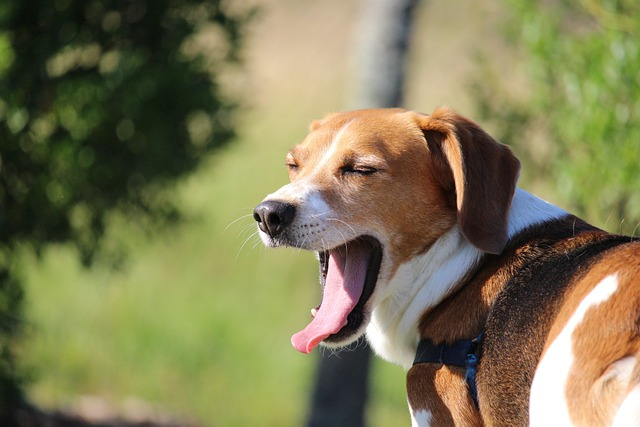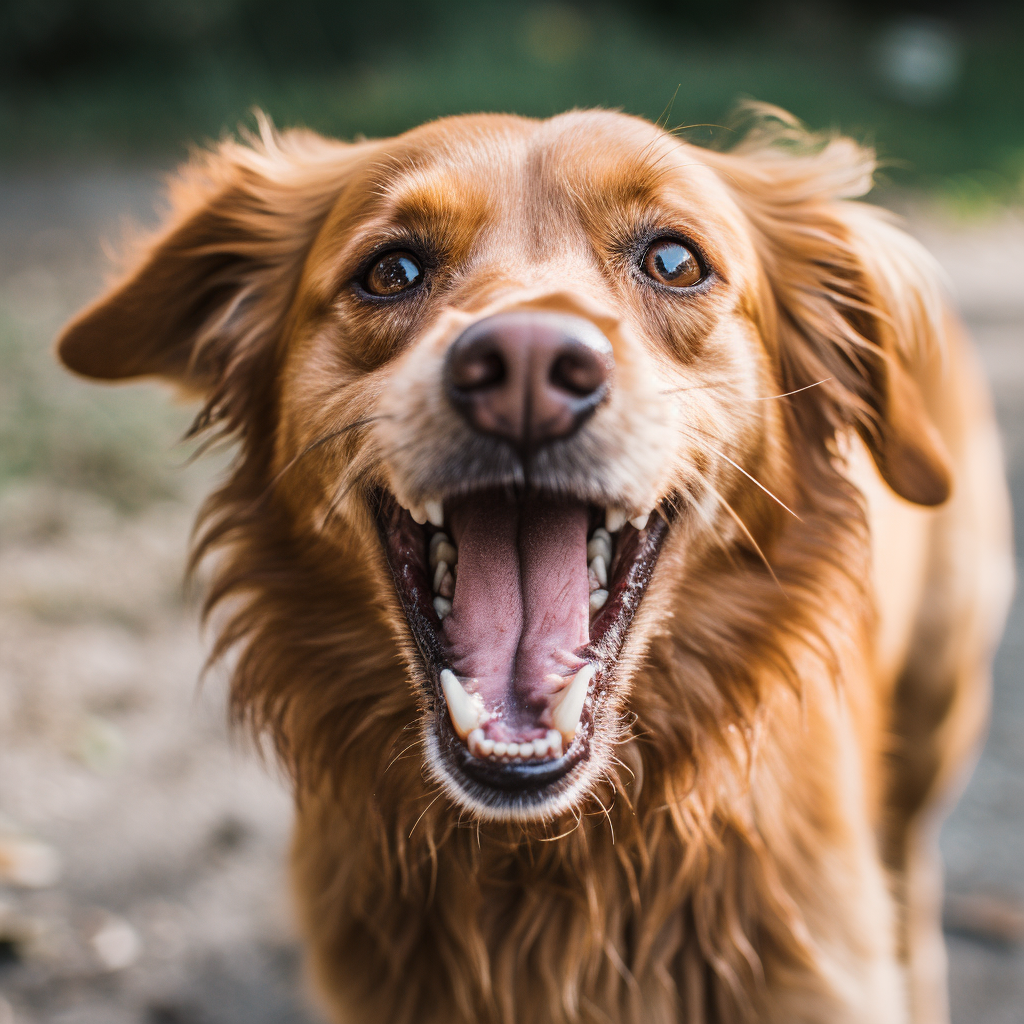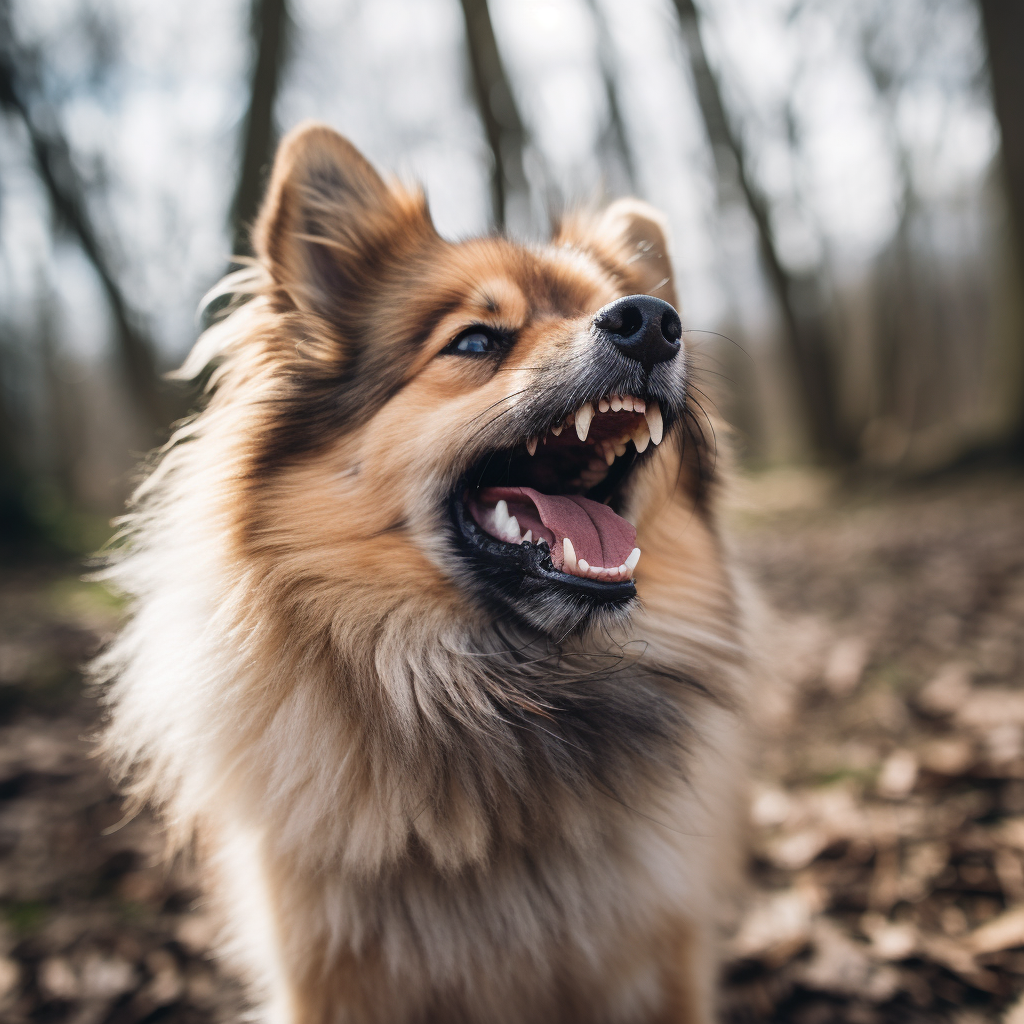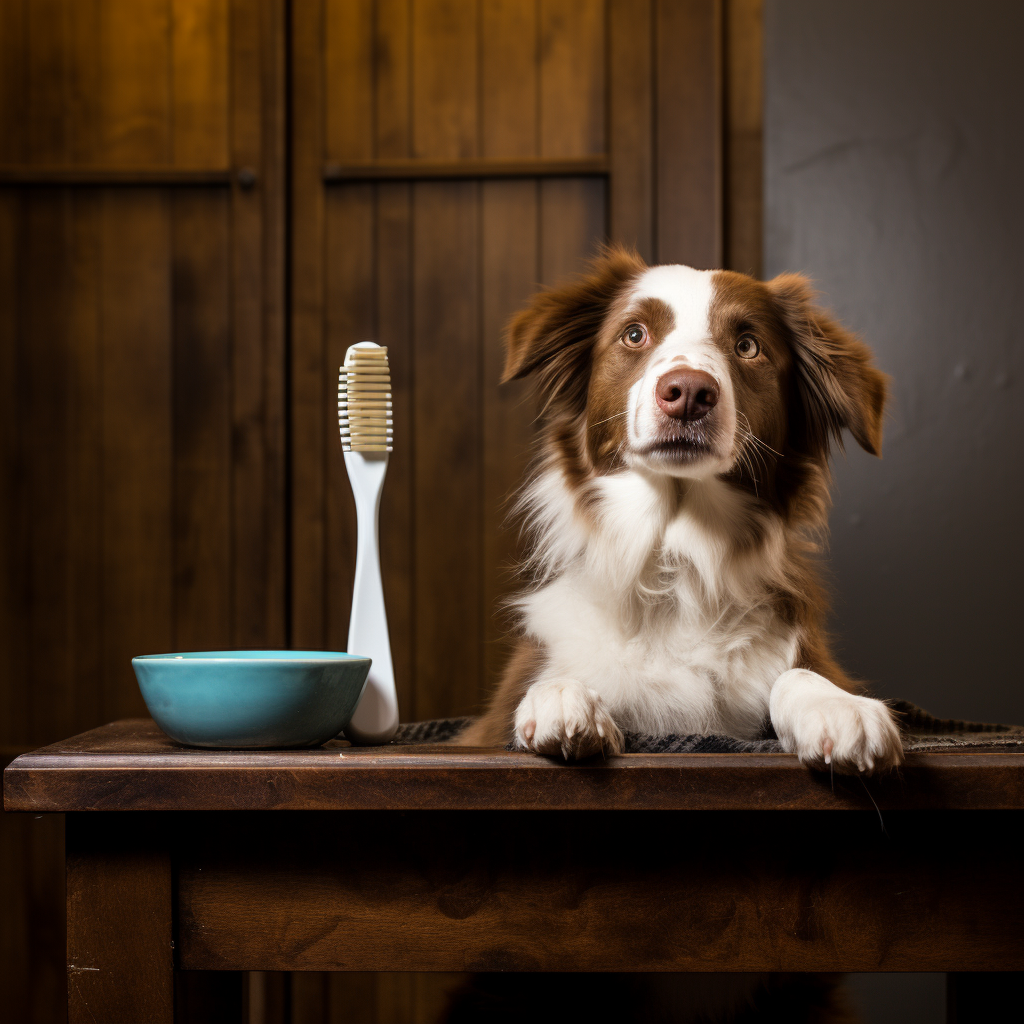Are Dogs Mouths Cleaner Than Humans'? - An Evidence-Based Look

Have you ever heard the saying that a dog’s mouth is cleaner than a human’s? This statement has been a subject of debate for years, but what does the evidence say? In this blog post, we’ll dive deep into the world of canine and human oral health, exploring the bacterial differences, potential risks, and ways to maintain a healthy mouth for both you and your furry friend. We will answer the question: are dogs’ mouths cleaner than humans?
Understanding the truth about dog’s and human’s oral health is essential for maintaining overall well-being and preventing potential health issues. So let’s get started and uncover the facts about our canine companions and their seemingly cleaner mouths, as we discuss “are dogs mouths cleaner than humans” in detail.
Key Takeaways
-
Comparisons of bacterial composition between human and dog mouths suggest that the amount of bacteria is comparable, although there is a risk for infection from dog saliva.
-
Periodontal disease can affect both humans and dogs. Proper oral care for both species is essential in preventing it.
-
Taking preventive measures to reduce risks associated with dog saliva, maintaining your pet’s dental health, implementing positive reinforcement techniques against licking behavior are important steps towards good oral hygiene for pets and people alike.
Dog's Mouth vs. Human's Mouth: The Bacterial Differences

Exploring the bacterial composition is a fundamental step in understanding how the cleanliness of a dog’s mouth compares to a human’s. Both dog and human mouths harbor an assortment of bacteria, some beneficial to oral health, while others can be harmful, such as E. coli or Salmonella. With this in mind, it’s difficult to determine if a dog’s mouth is cleaner than a human’s.
In fact, the amount of bacteria in both humans’ and dogs’ mouths is comparable, making it challenging to determine which is healthier. However, it must be kept in mind that bacteria in dog saliva can potentially infect human mouths. So, while it may be hard to declare a clear winner in the battle of cleanliness, recognizing the potential risks associated with dog saliva is of utmost importance.
Periodontal Disease in Dogs and Humans
Periodontal disease, caused by bacterial buildup, can affect both canines and humans, showing that dogs’ mouths can also be affected by oral health issues. Unattended oral health issues can cause significant distress and pain for your canine, underscoring the importance of maintaining clean mouths for both canines and humans.
Symptoms such as:
-
decreased appetite
-
abnormal chewing
-
drooling
-
dropping food from the mouth
-
bad breath
May be associated with periodontal disease in dogs. Interestingly, dental disease is the most frequently diagnosed affliction in dogs. Hence, awareness of the potential risks and appropriate oral care for both you and your dog can help prevent periodontal disease.
Infections and Diseases Transmitted Through Dog Saliva

Dog saliva can transmit bacterial and viral infections to humans, but the risk is generally low if proper precautions are taken. Infection transmission is possible through direct contact, such as a bite, or through contact with mucous membranes, such as the eyes, nose, or mouth, which could absorb any pathogens present in the saliva. However, the overall risk of pathogen transmission from a dog’s saliva to a human due to dog licks is generally low.
Nevertheless, certain individuals are more at risk of infection from dog saliva, including:
-
those aged under 5 years
-
those over 65 years
-
pregnant women
-
those without a functional spleen
-
immunocompromised individuals
Moreover, rabies is a virus that affects the nervous system and is typically transmitted through a dog’s saliva when it bites someone, which can introduce a new bacterial family to the human body.
Risk Factors and Prevention
Understanding the risk factors and taking preventive measures can minimize the chances of infections from dog saliva. Individuals who are immunocompromised or vulnerable, such as:
-
children under 5
-
adults over 65
-
pregnant women
-
those who are immunocompromised due to a disease process
Children may be at risk of bacterial infections from dog saliva, especially if they have dog’s teeth issues like retained baby teeth bleeding.
To prevent a dog from licking a baby, you can:
-
Pick the baby up so that they are out of the dog’s reach
-
Divert the dog’s attention by providing them with a toy
-
Allow the dog to go outside
-
Keep the dog in a separate room when needed, which can help keep the dog’s mouth clean.
Should a dog bite occur, it’s crucial to be aware of the potential risks associated with dog bites. You should immediately clean the wound thoroughly with soap and water for 15 minutes and seek medical attention, regardless of the severity of the wound.
Allergic Reactions to Dog Saliva
Some people may experience allergic reactions to proteins found in dog saliva, causing skin irritation or other symptoms. Allergic reactions associated with dog saliva may include:
-
Skin rashes
-
Hives
-
Itching
-
Swelling
It has been observed that proteins present in a dog’s saliva can be responsible for allergies in humans. Thus, recognizing potential allergens in dog saliva and taking necessary precautions is crucial if someone in your household is sensitive to these proteins.
The Impact of Dog Saliva on Open Wounds
While dog saliva has some antibacterial properties, it can also introduce harmful bacteria to open wounds, potentially causing infections. Dog saliva contains a variety of beneficial proteins such as histatins. These can help prevent infection, as well as protect cuts from bacterial infections. Additionally, research has indicated that licked wounds may heal twice as fast as unlicked wounds.
However, coming into contact with dog saliva may introduce harmful bacteria to open wounds, thus increasing the risk of infection. Bacteria present in your dog’s saliva can be dangerous if it comes into contact with an open wound or sore. If not treated promptly, these infections can progress rapidly. To avoid such complications, it is important to keep open wounds clean and covered, preventing the dog from licking them, which could lead to infections.
Maintaining Your Dog's Oral Health

Maintaining your dog’s oral health requires regular dental care, including brushing, using dental wipes, and scheduling professional cleanings. Dental care is a vital aspect of a dog’s well-being. Brushing, dental wipes, dental rinses, dental treats, and chew toys are all effective means of keeping a dog’s mouth clean. Maintaining your dog’s oral health can be done by brushing their teeth once a week and scheduling regular professional teeth cleanings at the vet.
The purpose of fluoride treatment and dental sealant for dogs is to prevent future decay and damage. Using toothpaste specifically designed for dogs is advisable because human toothpaste may contain potentially harmful ingredients like xylitol. Comprehensive dental care for dogs includes:
-
Thorough cleaning and polishing of their teeth
-
Addressing areas above and below the gum line
-
Tooth probing and x-rays
-
Followed by a fluoride treatment and application of a dental sealant to protect against decay and damage.
It is advised to schedule dental appointments for a dog at least once a year, or more frequently if the dog is exhibiting signs of periodontitis. Initiating dental care when your dog is still a puppy is key to preventing future dental problems. Pet dental insurance provides coverage for extractions and preventative cleanings, which can be a helpful resource for pet owners.
Dental Hygiene Products and Techniques
Various dental hygiene products and techniques can help keep your dog’s mouth healthy, acting as a dog’s mouth cleaner. These include:
-
Dog toothbrush and toothpaste
-
Dental chews and treats
-
Dental wipes
-
Water additives
-
Professional dental cleanings
Utilizing dental hygiene products and techniques can assist in maintaining your dog’s oral health. Routine brushing and dental chews can assist in decreasing the build-up of plaque and tartar, which can result in periodontal disease. Dental wipes and water additives can help to freshen breath and reduce bacteria in the mouth. Professional dental cleanings can help eliminate plaque and tartar build-up that cannot be removed with brushing.
A veterinarian should be consulted when choosing dental hygiene products and techniques for your dog, as they can provide personalized recommendations based on your dog’s specific needs. Additionally, they can provide guidance on how to use the products and techniques correctly to ensure your dog’s oral health is optimally maintained.
The Whole Prey Diet and Dental Health
Feeding your dog a whole prey diet can contribute to better dental health by promoting natural chewing and cleaning actions. The whole prey diet consists of feeding animals whole prey, including bones, organs, and muscle meat. This diet is thought to support dental health in dogs and cats through natural chewing and teeth-cleaning activities.
The act of chewing bones aids in the removal of plaque and tartar from the teeth, thus promoting better oral health. However, there are potential risks associated with the whole prey diet, including the possibility of choking, gastrointestinal obstruction, and the potential for infection from bacteria present in the prey.
When implementing a whole prey diet, ensuring the prey is fresh and devoid of parasites or bacteria is crucial. Additionally, monitoring your pet’s dental health and providing regular dental check-ups is strongly recommended.
If you aren't comfortable preparing raw meals for your dog, or you need a whole prey treat while traveling, consider our treats, specifically Whole Beast. Whole Beast is designed to bridge the gap between the evolutionary dietary needs of dogs and the modern-day challenges of providing raw meals. Rooted in the Whole Prey philosophy, this product ensures that dogs receive a balanced and nutrient-rich treat, akin to what their wild ancestors thrived on. Whole Beast's freeze-dried formula is a boon for pet owners who may be hesitant or find it inconvenient to serve raw meat and organs. By freeze-drying, we retain the optimum nutrient value of the ingredients while offering an easy-to-store, long-lasting, and mess-free alternative. For those seeking to nourish their dogs with the wholesome goodness of a natural diet without the associated hassles, Whole Beast is the perfect integration of convenience and nutrition.
Preventing Unwanted Licking Behavior

Training your dog not to engage in dog lick behavior towards humans and protecting open wounds from contact with dog saliva can prevent potential health issues. Alternative activities such as playing fetch, taking a stroll, or offering chew toys may be utilized to discourage this behavior.
To train a ‘leave it’ command, you can follow these steps:
-
Reward your dog for not licking.
-
Provide a distraction when they begin to lick.
-
Use deterrents such as bitter apple spray, citronella spray, or a squirt bottle filled with water to discourage unwanted licking behavior.
To help reduce such behavior, one can engage in interactive games, provide puzzle toys, and ensure regular exercise.
Comparing Animal Oral Health

Comparing the cleanliness of different animals’ mouths is challenging due to the varying types of bacteria present, making it difficult to determine which species has the cleanest mouth. The varying types of oral bacteria present in different animals complicates the comparison of their respective cleanliness levels. Additionally, animals possess distinct dental structures, oral hygiene practices, dental issues, necessary dental care, and dietary requirements in comparison to humans.
Therefore, it’s necessary to understand that comparing the cleanliness of different animals’ mouths, even if some might be cleaner than a human’s, is not a like-for-like comparison. The focus should be on maintaining proper oral hygiene and addressing dental issues for both humans and animals, rather than trying to determine which species has the cleanest mouth.
Summary
In conclusion, determining whether a dog’s mouth is cleaner than a human’s is not a straightforward task due to the varying types of bacteria present in both species. However, it’s essential to understand the potential risks associated with dog saliva, such as infections, allergic reactions, and the impact on open wounds.
By taking proper care of your dog’s oral health through regular dental care, using appropriate dental hygiene products and techniques, and preventing unwanted licking behavior, you can ensure the well-being of both you and your furry companion. So let’s put the debate to rest and focus on maintaining a clean and healthy mouth for everyone, regardless of species.
Frequently Asked Questions
Can humans catch bacterial infections from dog saliva?
Yes, humans can catch bacterial infections from dog saliva, particularly through direct contact such as a bite or contact with mucous membranes.
This is why it is important to practice good hygiene when handling dogs, and to be aware of the potential risks of contact with their saliva.
What are the symptoms of periodontal disease in dogs?
Symptoms of periodontal disease in dogs include decreased appetite, abnormal chewing, drooling, dropping food from the mouth and bad breath.
How often should I brush my dog's teeth?
For optimal oral health, brush your dog’s teeth once a week and visit the vet for regular professional cleanings.
What dental hygiene products and techniques are available for dogs?
Keeping your pup’s mouth healthy can be achieved with a combination of dog toothbrush and toothpaste, dental chews and treats, dental wipes, water additives, and professional dental cleanings.
How can I prevent unwanted licking behavior in my dog?
Prevent unwanted licking behavior by engaging your dog in alternative activities, training a ‘leave it’ command, using deterrents, and providing regular exercise.



Comments